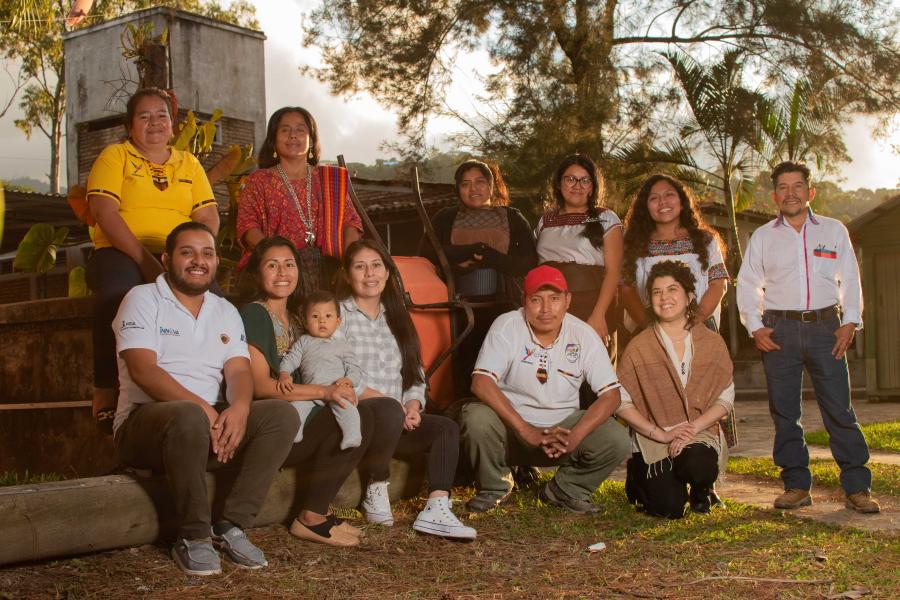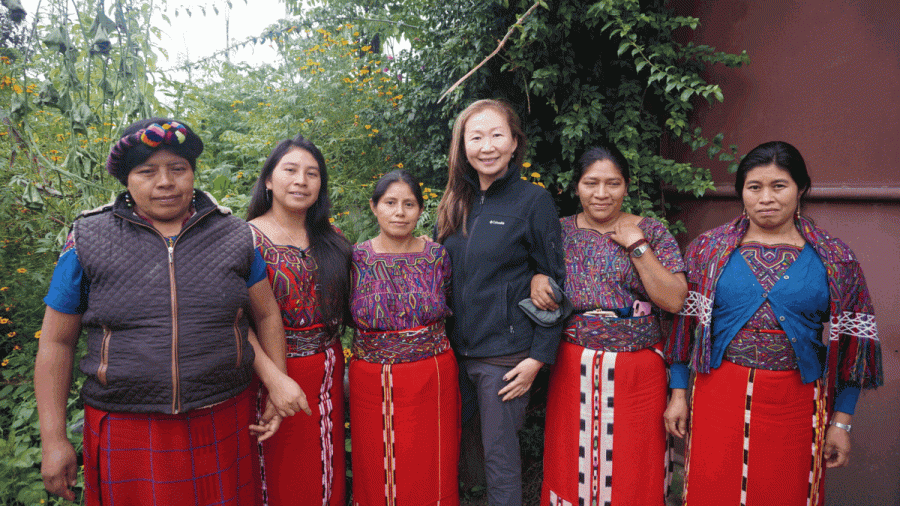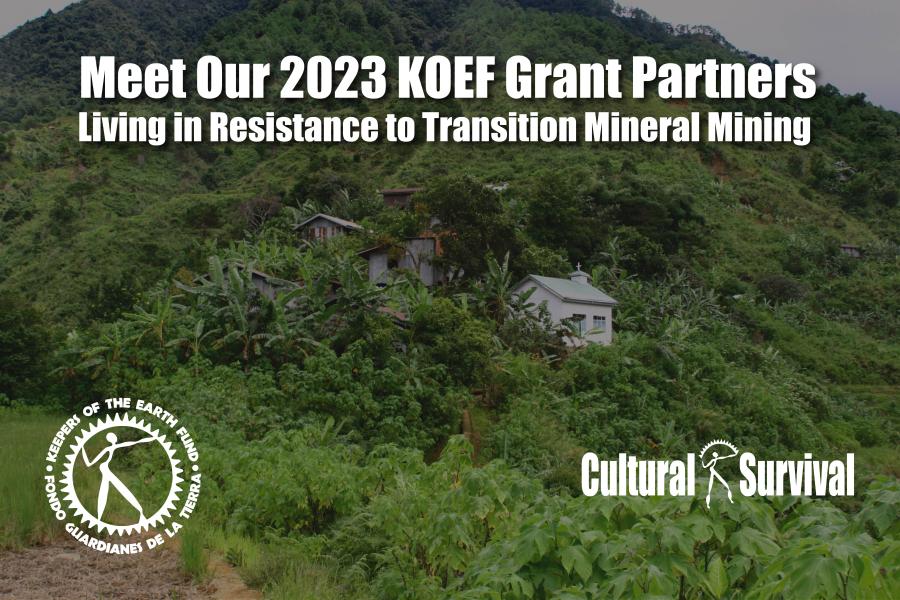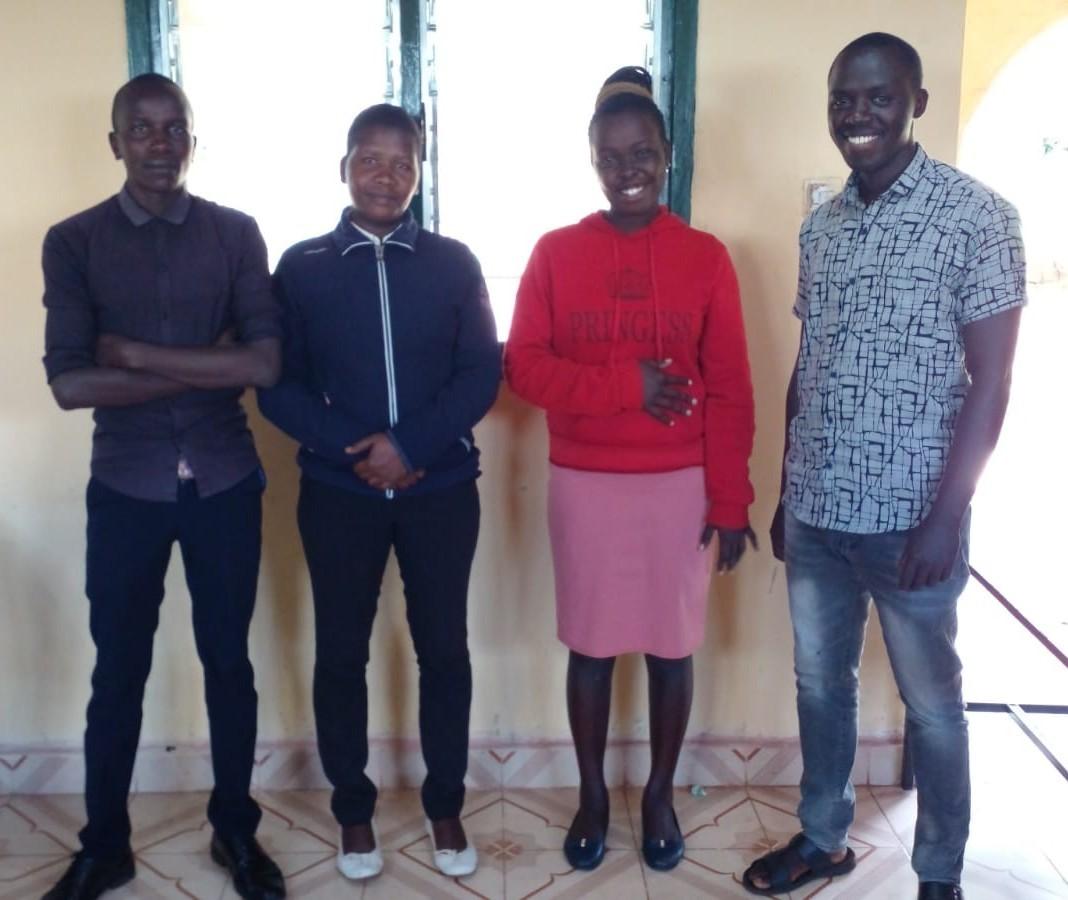
Through Cultural Survival's Indigenous Youth Fellowship Program, we support the leadership of Indigenous youth in advocating and striving for new ways of safeguarding their lands, cultures, and languages. Here, we uplift three youth fellowship projects related to the revitalization of languages and cultures.
Youth Group Tulwoob Koony (Ogiek and Koony) from Kenya
Area of focus: Revitalization of Indigenous Languages
Radio serves as the primary mode of communication in many rural communities due to its wide reach. For Indigenous Peoples, community radio plays a crucial role in revitalizing and preserving their culture, especially when it comes to safeguarding their language. In the Mount Elgon region of Kenya, the Ogiek community relies on Tulwoob Koony Radio as a trusted source of information, music, and entertainment while simultaneously bolstering the civic and cultural aspects of their community. With the support of the radio station and Cultural Survival’s fellowship program, a group of youth from this community initiated a project that focused on the revitalization of the endangered Koony language.
James Kwemoi (Ogiek), Ruth Chesang (Ogiek), Miriam Naibei (Koony), and Emmanuel Kiplimo (Ogiek) are a team of youth from the Ogiek community of Mount Elgon working to actively promote their Indigenous roots, cultures, and languages through community radio and multimedia platforms. At the heart of their fellowship project is their concern about the decline of Koony language speakers.
Their fellowship project, “Revitalizing the Endangered Koony Language,” aims to increase the number of fluent Koony speakers and create awareness about the importance of promoting and strengthening the Koony language and culture. Various activities were undertaken to achieve these goals, including Koony language classes that gave adults, youth, and children access to supporting language learning materials to help reclaim their mother tongue. Community volunteers were trained in Koony language and culture in order to create healthy, nurturing spaces before conducting a series of workshops in school classrooms to engage the younger generation. These sessions were recorded and shared on digital and social media outlets in an effort to continue the learning process.
Radio played a pivotal role in broadcasting recordings of the Koony language, enabling the younger generation to engage with their favorite programs while simultaneously revitalizing the endangered language. James commented, "Speaking the Koony language is a direct link to our past and cultural heritage."
For Indigenous languages like Koony, radio serves as a critical platform for language revitalization and the exploration of native culture. Youth initiatives on language revitalization and community radio play significant roles in preserving Indigenous languages and cultures from the brink of extinction, ensuring that they continue to thrive within communities like Ogiek and beyond.
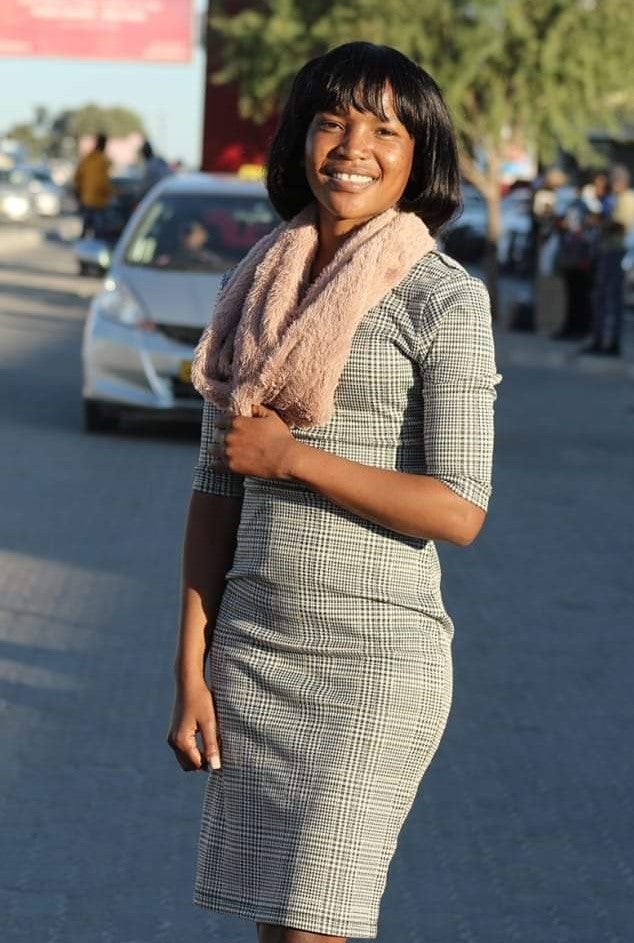
Patricia Dinyando (Khew San) from Namibia
Area of Focus: Revitalization of Indigenous Languages
Patricia Dinyando (Khew San) is a third-year student at the University of Namibia pursuing a bachelor’s degree in education. Hailing from a Khwe San community, for the past five years, she has volunteered at the Women's Leadership Center, contributing to its mission of empowering women to actively participate in shaping policy. In addition, she serves as a facilitator for the Young San Women and San Girls Group where she plays a vital role empowering and supporting women.
Patricia and her team of fellows, Johanna D. Mbamba, Johanna Ngugwe, Kalipa Dickson, Moses Rosinah, and Moses Dingombo, developed the project, “Khwe Yicerengu xi (Khwe Folktales).” Their collective effort aims to create a children’s book of folktales that have been told for generations in their community. The book will promote the Khwedam language, which is not officially recognized or taught in schools, and serve as a culturally responsive teaching resource for the youth of the Khe community and generations to come.
Engaging with Elders and abolishing the stereotype that they were not educated was the most passionate aspect of the project for Patricia and her team. Patricia said that in the past, young people were made to believe that they didn't have a writing system and couldn't write in their languages. "We discovered that there are books written in Khwedam languages, and so we also decided that we were going to create our own,” she said.
Through this project, the fellows also had an opportunity to acquire and further develop skills in collaboration, problem-solving, and communication—skills that will be instrumental in continuing their work. "In the future, we plan to establish a library or a space where we can store numerous copies of the book. The library will be a place where the team can continue teaching the Khwe language and culture. It will offer access to stories and books, providing a space for meetings and learning. Young people will have the opportunity to borrow and read books," Patricia said.
Cultural Survival’s Indigenous Youth Fellowship program is designed to support the autonomy of fellows and their projects while recognizing the communication challenges rural Indigenous communities face. “The understanding from the coordinating team and their support, especially during challenging times related to connectivity and communication obstacles, was crucial,” Patricia said. As the fellows involved in the Khwe Folktale project persevered to turn their dreams into reality, “the idea of this project was once just in our minds and seemed impossible. We truly appreciate that something we envisioned became a reality, and your trust in us contributed to this. We extend our gratitude to Cultural Survival,” Patricia said.
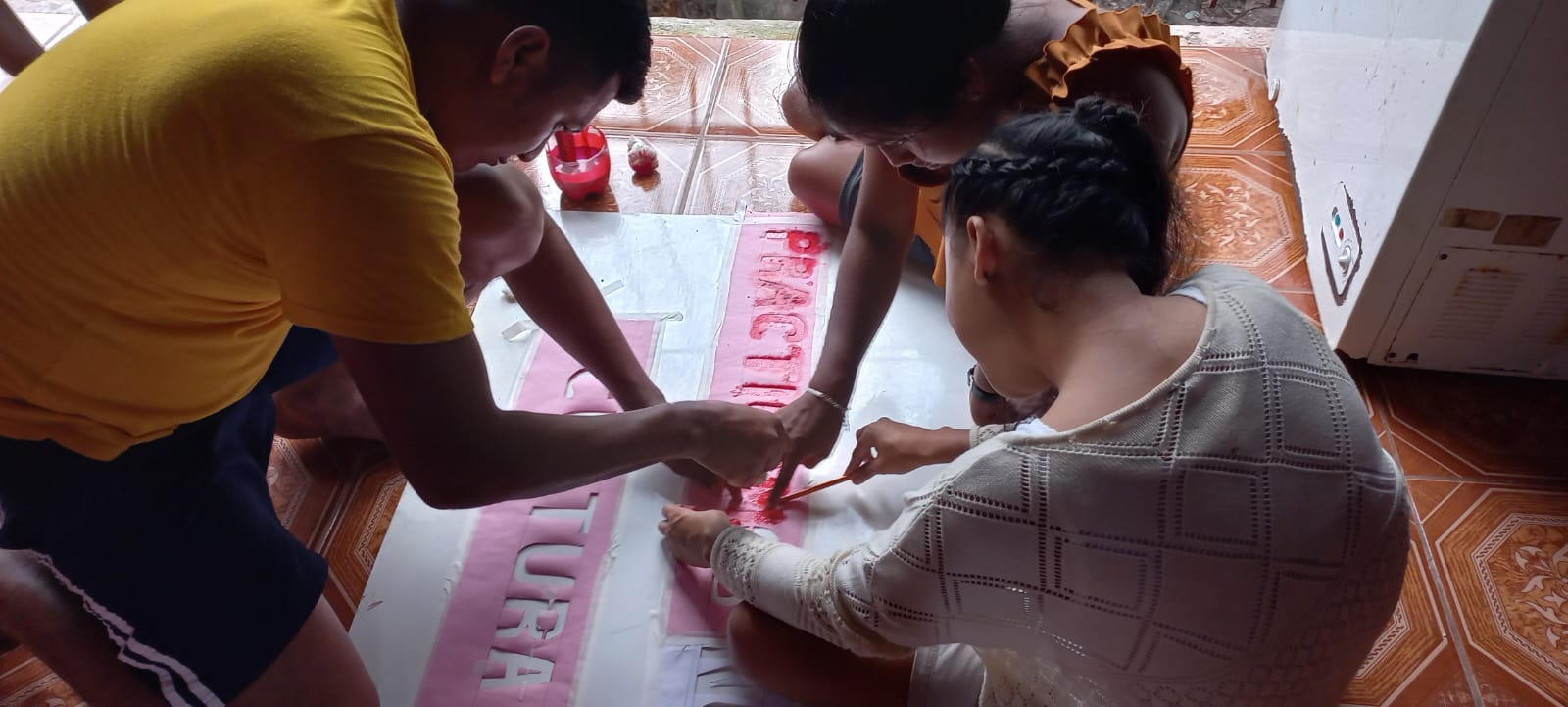
Adonis Clifford Ortiz (Rama) from Nicaragua
Area of Focus: Revitalization of Indigenous Languages
Adonis Clifford Ortiz McRea (Rama) was born and raised in the Indigenous community of Rama Cay, south of the municipality of Bluefields, Nicaragua, and holds a degree in business administration from Bluefields Indian and Caribbean University. Adonis has worked on several projects in his community that focus on the protection of the land and of Rama culture with an emphasis on capacity-building and youth empowerment.
Together with Yanetcy Arely McRea Daniel and Ernie Hamilton Martinez Omier, Adonis implemented a project, “Preservation and Revitalization of the Cultural and Linguistic Identity of Young Rama Indigenous People in Nicaragua.” Their project focused on the Indigenous community of Indian River and Rama Cay, located in the Rama territory on the south coast of the Caribbean, with the objective of strengthening cultural identity among the youth through a series of cultural and artistic activities.
The project consisted of two learning opportunities for the youth. The first was a series of painting workshops where participants learned different drawing and painting techniques. At the end of these workshops, each participant presented and explained the meaning of their work. The second was a language course organized to reinforce the Rama language using a mixture of group work and individual study. The emphasis of vocabulary practice, phrase-building, and singing in Raman allowed for a better assimilation of basic language knowledge.
Additionally, the team held two community cultural events. The first event was organized in the Indian River community for children and youth to raise awareness about the importance of preserving the cultural identity of Rama Peoples through the practice of their traditions. Several activities enlivened this event, including spear-throwing contests, song interpretations, and question-and-answer sessions. The second cultural event took place on the International Day of Indigenous Peoples in the Rama Cay community. Attended by youth and adults, the event was an opportunity for sharing knowledge and raising awareness about the importance of keeping Rama cultural identity alive.
Finally, the fellowship team produced a series of videos and panels with messages in the Rama language for linguistic preservation and revitalization, aided by the participation of Rama youth. The activities will have a long-lasting impact as they were led by and for Indigenous youth. This project represents, for Adonis and the youth, the struggle and hope to keep their ancestral language alive within the Rama Indigenous communities of Nicaragua.
